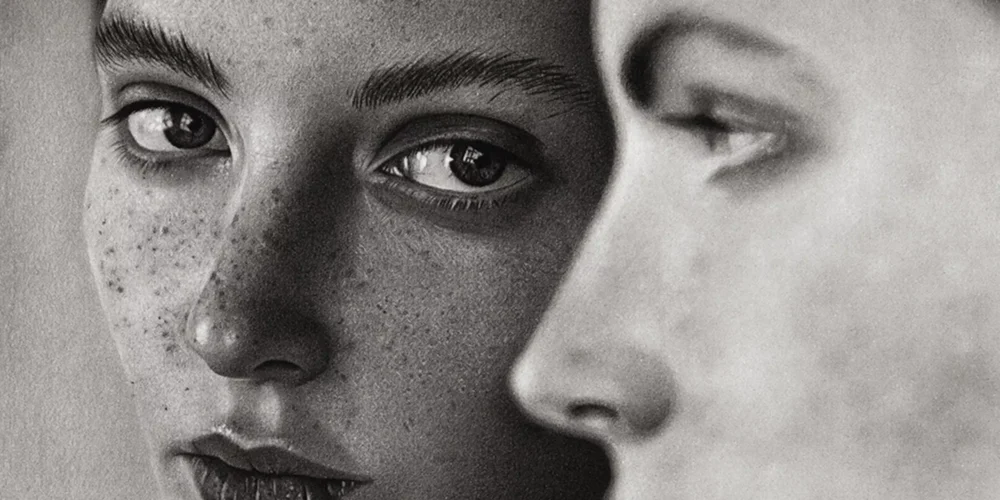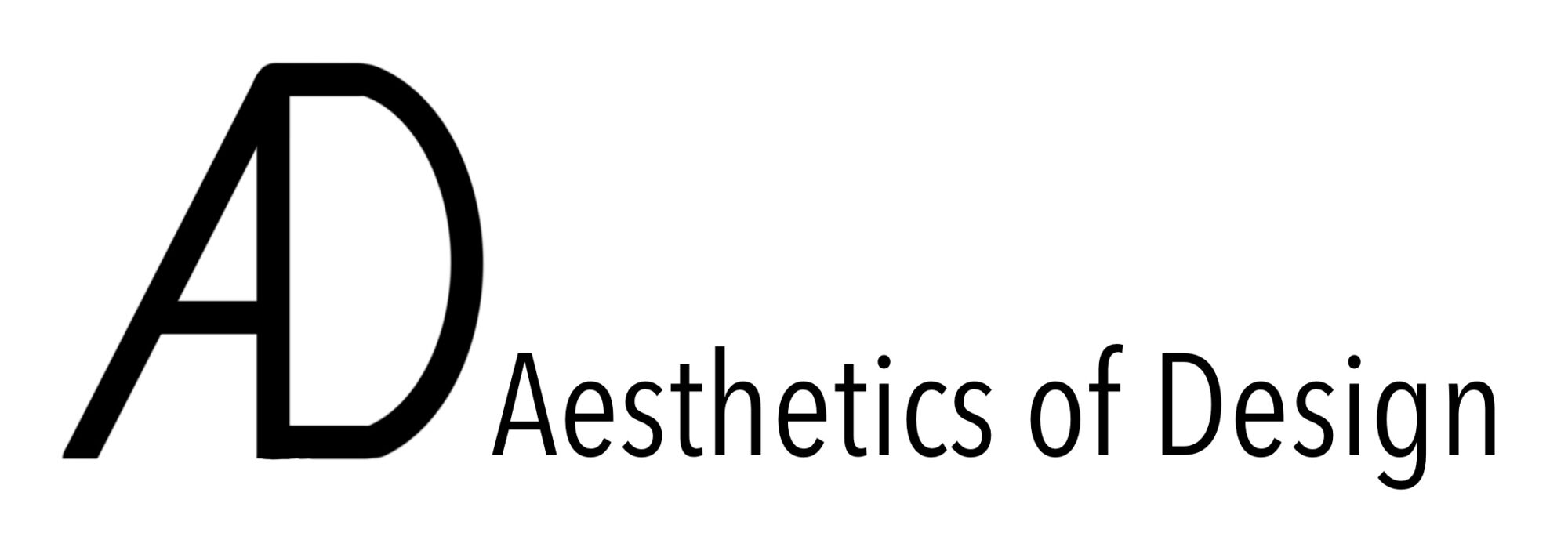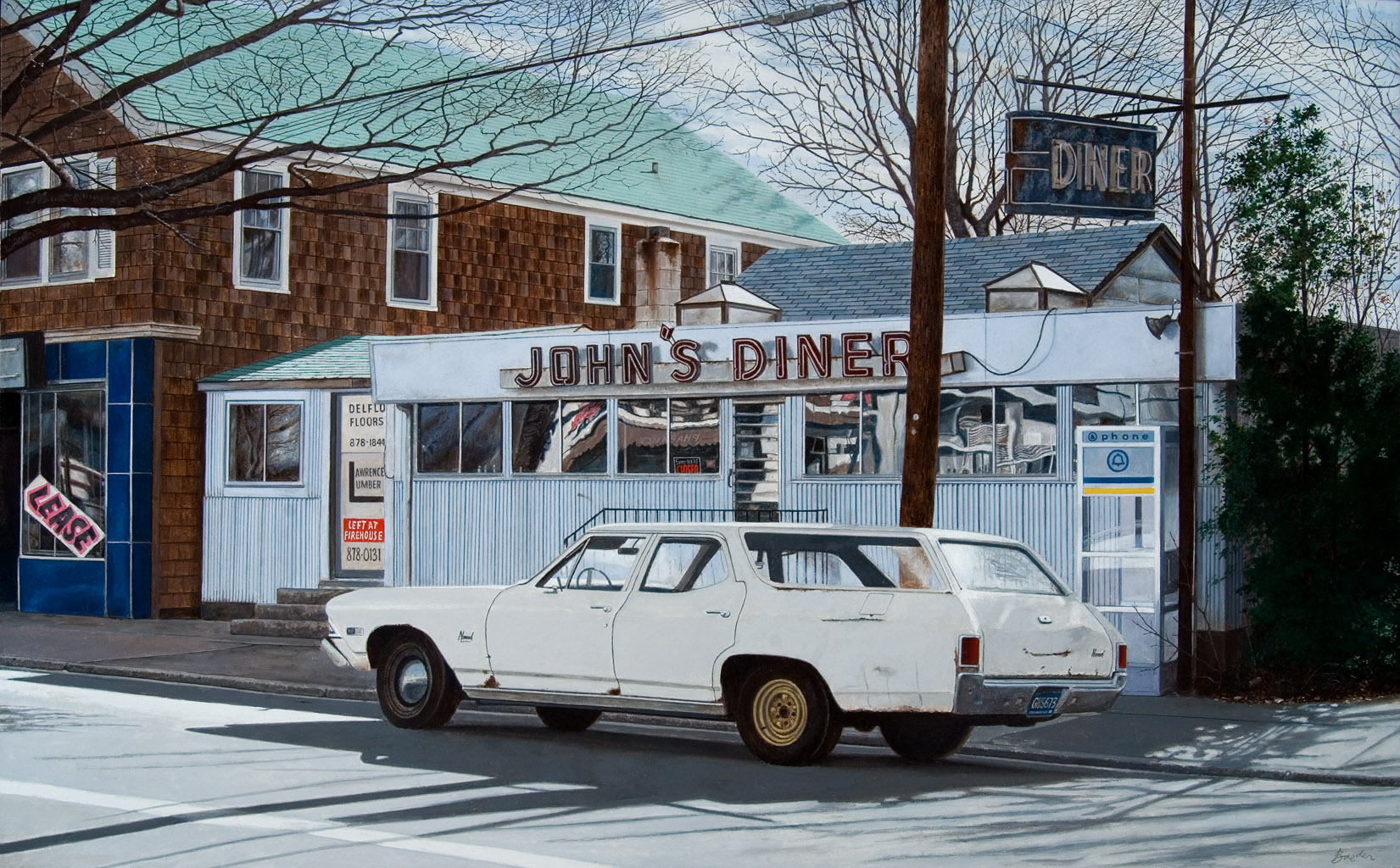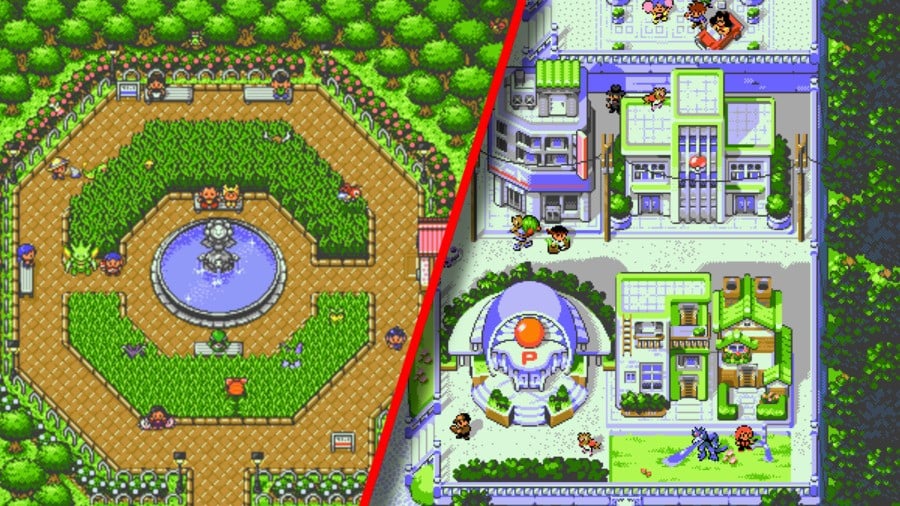Characteristics of Pixel Art:
- Limited Resolution: Pixel art often embraces a low-resolution look, creating a retro or nostalgic feel.
- Grid-Based Design: Every detail is built from small squares, making it distinct and intentional.
- Simplified Forms: Artists rely on minimal details, using color and shape strategically to imply complexity.
- Manual Precision: Unlike other digital art styles, pixel artists place each pixel deliberately, making it a labor-intensive craft.
Picture 1: Pokemon Game Pixel Graphics
What is Photorealism?
Photorealism, on the other hand, is an artistic approach that strives to replicate real-world visuals with extreme accuracy. In digital art, photorealistic images use high-resolution textures, advanced lighting, and complex shading techniques to create scenes that appear as if they were captured with a camera rather than drawn or painted. This style dominates majority of artwork where realism is the goal.
The aesthetic photorealism, coined in 1969 by Louis K. Meisel began by emerging in New York and California, it faced criticism from modernists but remains significant for its technical precision and use of technology in art.
Characteristics of Photorealism:
- High Resolution: Unlike pixel art, photorealism prioritizes ultra-detailed visuals.
- Realistic Textures: Surfaces, materials, and lighting behave as they do in the real world.
- Depth and Perspective: Advanced shading and 3D modeling create lifelike depth and space.
- Dynamic Lighting: Shadows, reflections, and environmental lighting enhance realism.

Picture 2: Photorealism Painting Often Mistaken for a Photo
Pixel art relies on meticulous pixel placement, often with restricted color palettes and a blocky aesthetic. Photorealism, however, uses sophisticated rendering techniques, high-resolution textures, and advanced lighting systems to mimic real-world visuals.
Pixel art often evokes nostalgia, simplicity, or stylized abstraction, while photorealism aims for immersion and believability. Pixel art forces the viewer to interpret details, whereas photorealism provides as much detail as possible.
Both pixel art and photorealism serve different purposes. Pixel art thrives on abstraction, nostalgia, and stylized creativity, while photorealism excels in realism, immersion, and technological advancement. Whether you prefer the retro charm of pixel art or the realism of photorealism, both aesthetics play a crucial role in their own respective categories.
![]()
Picture 3: Applying Techniques from both Aesthetics to Recreate the Mona Lisa
Featured Picture: https://en.wikipedia.org/wiki/Photorealism
Picture 1: https://www.nintendolife.com/news/2021/05/pokemon_redrawn_is_a_pixel_art_project_thats_redesigning_johto_and_kanto
Picture 2: https://www.artfinder.com/blog/post/photorealism/#/
Picture 3: https://medium.com/@alexandre97costa/creating-pixel-art-ditch-svg-embrace-png-yes-really-9c37a33345c5



4 Comments. Leave new
I am really impressed with the dichotomy you came up with! I cannot imagine a more perfect opposition than photorealism. I think that for your upcycle project the pixel art aesthetic and its innate accessibility is well in line with the recycling ethos. It would be interesting to see the connections between photorealism and upcycling, I struggle to think of a good example, it feels as though it is more niche than the pixel art aesthetic?
Thank you, that’s such a thoughtful reflection. I agree that pixel art feels naturally aligned with upcycling because of its simplicity and modularity. Photorealism and upcycling do seem like a harder fit, but maybe something like hyper-detailed sculpture from scrap metal or photo mosaics made of found objects could bridge that gap. It’s definitely more niche, but an interesting space to explore.
I really appreciate the clear and concise explanations of both pixel art and photorealism. The post does an excellent job of outlining the defining characteristics of each aesthetic, making the comparison easy to follow. The historical context for photorealism (mentioning Louis K. Meisel and its emergence in New York and California) adds depth and demonstrates thoughtful research. I also like how you tied your personal connection to pixel art through Pokémon, as it gives the post a personal touch and makes it relatable.
Could you elaborate on why you consider photorealism to be the opposite of pixel art? For example, are there shared principles or overlapping goals that they interpret differently?
Thank you, I really appreciate your thoughtful feedback. I see photorealism as the opposite of pixel art because while both aim to depict subjects visually, pixel art embraces abstraction and minimalism, relying on suggestion, whereas photorealism pushes for maximum detail and precision to mirror reality. They both value craft and intentionality, but express it in entirely different ways—one through reduction, the other through exact replication.